Ugly fish. Trash fish. Suckers. Chubs. A lot of native fish in our rivers don’t get no respect. Many anglers consider them good for nothing, except for throwing back—way back onto the bank.
But we anglers and sportsmen who care about rivers and cutthroats need to adjust our attitude a bit and quit looking down our noses at some of the “other” native fish.
Turns out “trash” fish like Colorado pikeminnow, razorback sucker, humpbacked chub, bonytail and other native species are critically important to river and trout habitat conservation efforts here in the Colorado River Basin and other watersheds in the West.
And trout and other angler-favored species are riding their fintails to a better life.
The pikeminnow has been around for millions of years in the Colorado Basin and can grow up to 6 feet long and live for decades. Pioneers used pitchforks at times, it’s said, to haul them out of the river, they were so abundant. The fish provided food (albeit a bit bony) for the settlers.
But with growing water diversions, drought, invasive species and other factors pressuring the river in the last half century, the numbers of these native fish plummeted, and they were listed under the Endangered Species Act. In 1988, the Upper Colorado River Endangered Fish Recovery Program was launched to bring them and the chubs and suckers back to sustainable numbers.
For three decades, the program has fostered cooperation, rather than conflict, among water users and directed federal and state funds to infrastructure projects that have benefited multiple users, from ranchers and farmers to municipalities.
Trout Unlimited and other conservation groups have supported those efforts, because the water projects, improved infrastructure and enhanced river flows needed to recover pikeminnows, suckers and chubs also benefit upstream coldwater species like trout.
For instance, TU helped upgrade the Relief Ditch and Hartland irrigation diversions on the Gunnison River a few years ago—a project that improved habitat and flows for trout.
The project would not have been possible without funds directly tied to native fish recovery.
Cary Denison, TU’s project coordinator in the Gunnison area, says that many anglers don’t realize that much of the West’s native trout have been removed from their historical ranges, and the remaining “natives” are those fish that many consider to be trash fish.
“If we aim to improve these rivers, we need to leverage the importance of these species to improve trout habitat as well.”
They are some of the original members of that river community, and they belong there. We need all of the pieces of a river ecosystem intact to keep it healthy.
So take a second look at that “trash” fish and give it some serious props for helping improve and restore our rivers for the other fish species we love.
Randy Scholfield is TU’s communications director for the Southwest.
Photo credit: US Fish and Wildlife Service






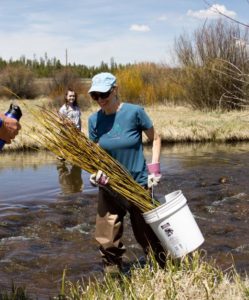 The group’s inaugural project at Fraser Flats aimed to restore a roughly one-mile stretch of the Fraser between the towns of Tabernash and Fraser, with the goal of providing healthy habitat for trout even during periods of reduced flows. The Fraser in this section had become too wide and shallow, resulting in sedimentation and high temperatures that smothered bug life and pressured coldwater-loving trout.
The group’s inaugural project at Fraser Flats aimed to restore a roughly one-mile stretch of the Fraser between the towns of Tabernash and Fraser, with the goal of providing healthy habitat for trout even during periods of reduced flows. The Fraser in this section had become too wide and shallow, resulting in sedimentation and high temperatures that smothered bug life and pressured coldwater-loving trout.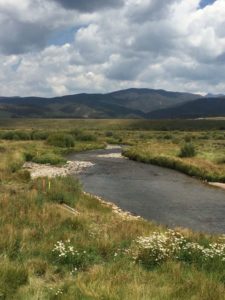 Colorado Parks and Wildlife conducted a fish survey on Oct. 5, shortly after completion of the project, and found dramatic increases in the biomass of brown and rainbow trout in the stretch compared to previous surveys, and an even larger increase in numbers of larger (14" and up) fish.
Colorado Parks and Wildlife conducted a fish survey on Oct. 5, shortly after completion of the project, and found dramatic increases in the biomass of brown and rainbow trout in the stretch compared to previous surveys, and an even larger increase in numbers of larger (14" and up) fish.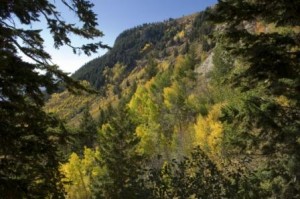
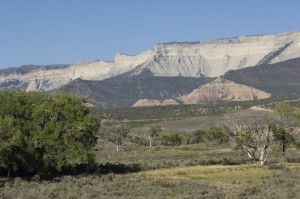 The MLP process is a new tool that promises to address some of that top-down, fragmented approach to public land management. To their credit, the BLM is listening and incorporating suggestions from local ranchers, conservation groups and elected officials into their leasing plan for South Park.
The MLP process is a new tool that promises to address some of that top-down, fragmented approach to public land management. To their credit, the BLM is listening and incorporating suggestions from local ranchers, conservation groups and elected officials into their leasing plan for South Park. There was no fish mortality documented from the spill, while bug sampling by an aquatic biologist with Mountain Studies Institute indicates a still thriving population of mayfly nymphs and caddis pupa. Colorado Parks and Wildlife (CPW) had installed pens of fingerling trout in the Animas before the plume arrived- and none of those fish died either. CPW ran an electro-shocking episode after the “Spill” with the usual re-capture protocol and got essentially the same results as the year before. Actually, the survey showed a slight improvement.
There was no fish mortality documented from the spill, while bug sampling by an aquatic biologist with Mountain Studies Institute indicates a still thriving population of mayfly nymphs and caddis pupa. Colorado Parks and Wildlife (CPW) had installed pens of fingerling trout in the Animas before the plume arrived- and none of those fish died either. CPW ran an electro-shocking episode after the “Spill” with the usual re-capture protocol and got essentially the same results as the year before. Actually, the survey showed a slight improvement. Getting the river back to it's usual state was no easy task but Trout Unlimited and partners were willing to take the lead. "It’s been quite a year since the Gold King spill sent a torrent of yellow, metal-laden mine water down the Animas River in SW Colorado," said Ty Churchwell, TU San Juan Mountains Coordinator. "But long before this unfortunate event, TU was deeply embedded in the water quality conversation – and now we’ve doubled down. Our efforts to pass Good Samaritan legislation are bearing fruit in the form of a bipartisan discussion draft now working its way through the halls of Congress. We hope to see the bill formally introduced this session."
Getting the river back to it's usual state was no easy task but Trout Unlimited and partners were willing to take the lead. "It’s been quite a year since the Gold King spill sent a torrent of yellow, metal-laden mine water down the Animas River in SW Colorado," said Ty Churchwell, TU San Juan Mountains Coordinator. "But long before this unfortunate event, TU was deeply embedded in the water quality conversation – and now we’ve doubled down. Our efforts to pass Good Samaritan legislation are bearing fruit in the form of a bipartisan discussion draft now working its way through the halls of Congress. We hope to see the bill formally introduced this session."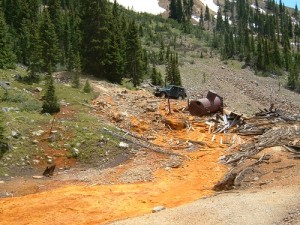 The Good Samaritan Legislation would address the current pollution clean-up laws in the United States. Currently, the Clean Water Act and the Comprehensive Environmental Response, Compensation, and Liability Act, place the clean-up burden on the property owners. But in the case of these abandoned mines, the owners are long-gone. Now the clean-up falls on the shoulders of Good Samaritans like TU and other partners. However, the liabilities in the laws- requiring a project to show significant improvements for a specific period of time and makes the Good Samaritan liable for any failures in improvements- have caused a legal gridlock.
The Good Samaritan Legislation would address the current pollution clean-up laws in the United States. Currently, the Clean Water Act and the Comprehensive Environmental Response, Compensation, and Liability Act, place the clean-up burden on the property owners. But in the case of these abandoned mines, the owners are long-gone. Now the clean-up falls on the shoulders of Good Samaritans like TU and other partners. However, the liabilities in the laws- requiring a project to show significant improvements for a specific period of time and makes the Good Samaritan liable for any failures in improvements- have caused a legal gridlock.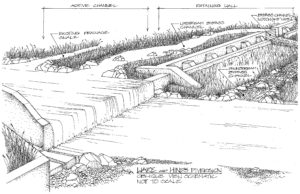 TU partnered with CPW to design and build a fish passage channel around the Ware and Hinds irrigation diversion structure on Elk Creek, a tributary to the Colorado River main-stem with its confluence at New Castle, CO. The Ware and Hinds diversion structure spans the width of the channel and presents a barrier to spawning fish moving out of the Colorado River main-stem
TU partnered with CPW to design and build a fish passage channel around the Ware and Hinds irrigation diversion structure on Elk Creek, a tributary to the Colorado River main-stem with its confluence at New Castle, CO. The Ware and Hinds diversion structure spans the width of the channel and presents a barrier to spawning fish moving out of the Colorado River main-stem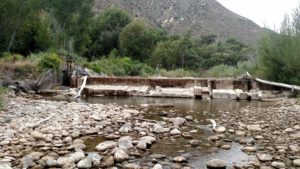 The fish passage project could not have moved forward without the work from the Ferdinand-Hayden Chapter by raising $3,000 that allowed for the preliminary engineering to be completed. "This came at a critical time when I needed to finalize our design drawings," said Richard Van Gytenbeek, Colorado River Basin Outreach Coordinator. "Their contribution allowed me to pay the engineer and complete the drawings which kept the project going."
The fish passage project could not have moved forward without the work from the Ferdinand-Hayden Chapter by raising $3,000 that allowed for the preliminary engineering to be completed. "This came at a critical time when I needed to finalize our design drawings," said Richard Van Gytenbeek, Colorado River Basin Outreach Coordinator. "Their contribution allowed me to pay the engineer and complete the drawings which kept the project going."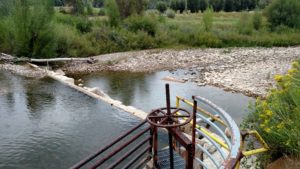 The Elk Creek passage also demonstrates the
The Elk Creek passage also demonstrates the 
